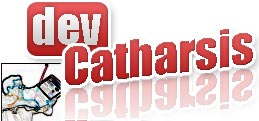After several installations on some up to date machines, I decided to have a go on an old laptop.
The SpecsCeleron 600MHz, 512 MB RAM
The Pre-Instalation Process
The installation started asking for:
- Documents and Settings Transfer
- Hardware advisor application
The Instalation Process
I chose to upgrade from XP, and the installer throw me the exact number of few question I was expecting. This was an fresh XP installation I did a month ago. I used Office and Visual Studio, and was quite pleased with the response I got from such an old CPU.
The installation process was, as expected, lengthy (over 6H!). The installer didn't try to predict the ETA, just said something like "Your upgrade may take several hours to complete". Well done, Microsoft, nobody will accuse you of failing the installations ETAs again :)
Software upgrade results
The upgrade went smoothly except for Visual Studio 2005 that stop working, forcing a repair.
Hardware upgrade results
The hardware recognition was satisfactory. It failed to recognize my BlueTooth dongle, and some of the notebook utilities.
The real problem was the video adapter - it's using the SVGA standart driver. So we cannot expect much for video performance. I would call it a fair performance for a standart SVGA driver.
The VeredictFrom a not so slow as expected XP installation, I successfully upgraded it to a not too much slower Vista.
I specially noticed some overhead on explorer itself - much of it probably dued to the SVGA standart driver and the fact that this was an upgrade, not a clean install - please note that the hard disk is an old 4200 rpm.
I know this notebook has way too much memory for what a Celeron at 600 were used to. But the fact is that in much of the time, it works better than my other XP notebook, a Celeron 1100 with 128MB of memory (this was the notebook were I've tried to install Ubunto in quest of better responsiveness , only to rollback to XP again...)
Bottom line is: I'll stick with Vista! But XP still has an advantage, at least on memory consumption. So let there be memory.
[update information]One huge overhead I've been experiencing over XP is on file system access. For instance, the security information change does something like 2 changes per second! Copy from and to the same disk displays 40 bytes/sec!... And yes, advanced performance is enabled - in despair...
 After a very interesting debate over the role of software architecture over lunch, where we compared it against the role of the building architect, I friend of mine sent me this link: Worldwide Institute of Software Architecture.
After a very interesting debate over the role of software architecture over lunch, where we compared it against the role of the building architect, I friend of mine sent me this link: Worldwide Institute of Software Architecture.